- Cilantro: Properties and Contraindications, Cultivation – Your Ultimate Guide
- Properties of Cilantro
- Contraindications of Cilantro
- Cultivation of Cilantro
- Cilantro in Cuisine
- In Conclusion
- Overview and History of Cilantro
- Uses of Cilantro in Cooking
- Cultivation of Cilantro
- Nutritional Value of Cilantro
- Vitamins and Minerals
- Antioxidant Properties
- Digestive Health
- Detoxification
- Weight Management
- Conclusion
- Health Benefits of Cilantro
- Culinary Uses of Cilantro
- 1. Mexican Cuisine
- 2. Asian Cuisine
- 3. Mediterranean Cuisine
- 4. Caribbean Cuisine
- 5. Salad Dressings and Sauces
- 6. Flavored Oils and Butters
- Growing Cilantro: Tips and Techniques
- 1. Choosing the Right Location
- 2. Starting from Seeds
- 3. Watering and Fertilizing
- 4. Harvesting Cilantro
- 5. Propagating Cilantro
- 6. Common Pests and Diseases
- 7. Companion Planting
- 8. Continuous Planting
- Common Pests and Diseases of Cilantro
- Pests:
- Diseases:
- Precautions and Contraindications When Using Cilantro
- 1. Allergic Reactions:
- 2. Interaction with Medications:
- 3. High Oxalate Content:
- 4. Pesticide Residues:
- 5. Cross-Reactivity:
- 6. Excessive Consumption:
- Fun Facts and Trivia about Cilantro
- Questions and Answers:
- What are the properties of cilantro?
- Is cilantro easy to cultivate?
- What are the potential health benefits of cilantro?
- Can cilantro be harmful to some individuals?
- How can cilantro be used in cooking?
- Are there any contraindications for cilantro?
- Can cilantro be used as a natural remedy?
- Videos: How to Quickly Grow Cilantro Indoor? Vegetable Gardening 101, CiCi Li – Asian Home Cooking Recipes
Cilantro, also known as coriander or Chinese parsley, is a versatile herb that is widely used in cuisines around the world. It is known for its distinct flavor and aroma, which is a combination of citrus and earthy notes. Cilantro is commonly used in Mexican, Indian, Thai, and Middle Eastern dishes, adding a fresh and vibrant element to a variety of recipes.
Properties: Cilantro is not only delicious, but it also offers a range of health benefits. It is rich in antioxidants, vitamins, and minerals, including vitamin C, vitamin K, and potassium. These nutrients can support immune function, promote healthy digestion, and help maintain healthy blood pressure levels. Cilantro also contains compounds that may have antibacterial and anti-inflammatory effects, making it a potentially valuable addition to a balanced diet.
Contraindications: While cilantro is generally safe for consumption, it is important to note that some individuals may have a cilantro allergy. Symptoms of an allergic reaction can include hives, itching, swelling, and difficulty breathing. If you experience any of these symptoms after consuming cilantro, it is best to avoid it in the future and consult with a healthcare professional. Additionally, cilantro may interact with certain medications, so it is important to talk to your doctor if you are taking any medications before incorporating cilantro into your diet.
Cultivation: If you’re interested in growing cilantro at home, it is a relatively easy herb to cultivate. Cilantro prefers full sun or partial shade and well-draining soil. Sow the seeds in spring or fall, directly in the ground or in pots, and keep the soil consistently moist until the seeds germinate. Once the plants have reached a height of about 4 inches, you can begin harvesting the leaves. Remember to harvest the leaves regularly to encourage growth and prevent the plant from bolting.
Whether you enjoy cilantro in your cooking or want to try growing it yourself, understanding its properties, potential contraindications, and cultivation techniques can help you make the most of this versatile herb. Experiment with different recipes and techniques to discover your favorite ways to incorporate cilantro into your culinary creations.
Cilantro: Properties and Contraindications, Cultivation – Your Ultimate Guide
Properties of Cilantro
Cilantro, also known as coriander or Chinese parsley, is a versatile herb known for its distinct flavor and aroma. It is widely used in culinary dishes around the world, particularly in Mexican, Indian, and Thai cuisines.
Taste: Cilantro has a citrusy and slightly peppery taste, with hints of sweetness.
Aroma: Cilantro has a fresh and vibrant aroma, which adds a delightful fragrance to dishes.
Nutritional Value: Cilantro is a good source of vitamins A, C, and K. It also contains minerals such as potassium and manganese, and is rich in antioxidants.
Contraindications of Cilantro
While cilantro is generally safe for consumption, it may not be suitable for everyone. Some individuals may experience allergic reactions, such as itching, rashes, or swelling, after consuming cilantro. If you have a known allergy to coriander or other similar herbs, it is best to avoid cilantro.
Cilantro may also interact with certain medications, such as blood thinners. If you are taking any medications, consult with your healthcare provider before consuming cilantro or cilantro supplements.
Cultivation of Cilantro
Cilantro can be easily grown at home, either in containers or in the garden. Here are some tips for cultivating cilantro:
- Select a well-draining soil enriched with organic matter.
- Plant cilantro seeds in a sunny location, preferably in the spring or fall.
- Sow the seeds directly into the soil, about 1/4 inch deep, and keep the soil moist.
- Thin out the seedlings to give them enough space to grow.
- Water the plants regularly and make sure they receive adequate sunlight.
- Harvest cilantro leaves once they reach a desirable size, usually after 3-4 weeks.
- Store harvested cilantro in the refrigerator to maintain its freshness.
Remember that cilantro has a short growing season and tends to bolt in hot weather. To prolong the harvest, consider planting cilantro in successive batches throughout the season.
Cilantro in Cuisine
Cilantro is an incredibly versatile herb that can be used in a wide range of dishes:
- Add fresh cilantro leaves to salads and salsas for an added burst of flavor.
- Use cilantro to garnish soups, stews, and curries.
- Blend cilantro with other ingredients to make sauces, such as cilantro pesto or coriander chutney.
- Infuse cilantro in oil or vinegar for a homemade flavored dressing.
- Marinate meats or seafood with cilantro-based marinades for extra taste.
- Add chopped cilantro to guacamole or salsa for a refreshing touch.
In Conclusion
Cilantro is a flavorful herb that adds a unique taste and aroma to various culinary dishes. Whether you grow cilantro at home or enjoy it in your favorite recipes, it is important to be aware of its properties, contraindications, and cultivation tips. Experiment with cilantro in your cooking to discover new flavors and enhance your meals.
Overview and History of Cilantro
Cilantro, also known as coriander or Chinese parsley, is a versatile herb that is widely used in various cuisines around the world. It is well-known for its distinct flavor and aroma, which is often described as citrusy and pungent.
The use of cilantro dates back thousands of years, with evidence of its cultivation and consumption found in ancient civilizations such as Egypt, Greece, and Rome. It was highly valued for its medicinal properties and was even used as a symbol of love and immortality in ancient Egypt.
Originally native to the Mediterranean region and parts of Asia, cilantro eventually spread to other parts of the world through trade and exploration. Today, it is grown and consumed in many countries, including Mexico, India, China, and Thailand.
Uses of Cilantro in Cooking
Cilantro is a staple ingredient in many cuisines, particularly in Latin American, Indian, and Southeast Asian dishes. It is commonly used in both fresh and dried forms.
The leaves, often referred to as cilantro, are used as a garnish or added to salads, salsas, and guacamole. They can also be used as a flavoring agent in soups, stews, and curries.
The seeds, known as coriander, have a milder flavor and are commonly used as a spice. They can be ground and added to various dishes, such as marinades, pickles, and spice blends.
Cultivation of Cilantro
Cilantro is a relatively easy herb to grow and can be cultivated in both gardens and containers. It prefers well-drained soil and requires full sun or partial shade.
Seeds are typically sown directly into the soil, as cilantro has a long taproot that makes transplanting difficult. It is important to keep the soil consistently moist until the seeds germinate.
Cilantro has a relatively short growing season and tends to bolt, or go to seed, in hot weather. To extend the growing season, successive plantings can be made every few weeks.
| Botanical Name | Family | Origin |
|---|---|---|
| Coriandrum sativum | Apiaceae | Mediterranean region, Asia |
Note: Cilantro is sometimes confused with culantro, which is a different herb with a similar taste and appearance. Culantro is commonly used in Caribbean, Latin American, and Southeast Asian cooking.
Nutritional Value of Cilantro
Cilantro, also known as coriander or Chinese parsley, is a herb widely used in culinary dishes around the world. Apart from adding flavor and aroma to various dishes, cilantro also offers several nutritional benefits.
Vitamins and Minerals
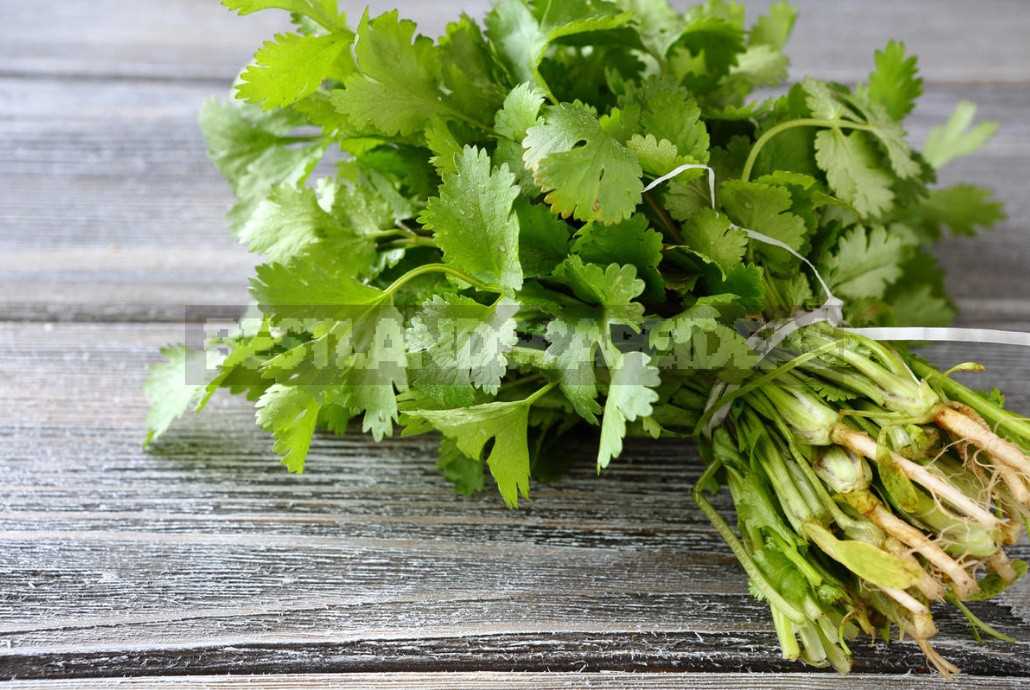
- Cilantro is rich in vitamin A, vitamin C, and vitamin K. These vitamins play a crucial role in maintaining healthy skin, boosting the immune system, and promoting blood clotting.
- It also contains minerals such as potassium, manganese, and calcium. These minerals are essential for maintaining proper heart and bone health, as well as for promoting various metabolic functions in the body.
Antioxidant Properties
Cilantro is packed with antioxidants, which help protect the body against the damaging effects of free radicals. These antioxidants can help prevent cell damage, reduce inflammation, and lower the risk of chronic diseases such as heart disease and certain types of cancer.
Digestive Health
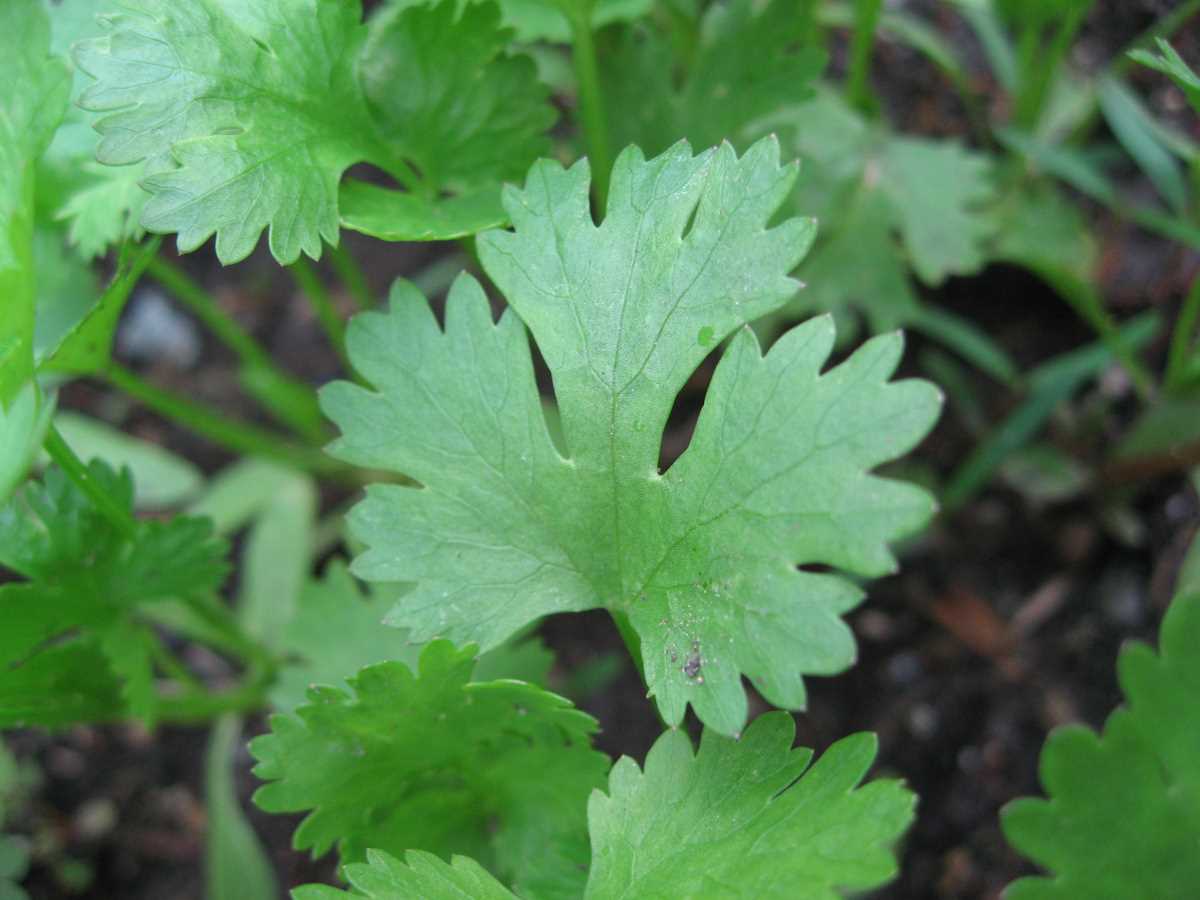
Cilantro is known to have digestive benefits. It contains compounds that have anti-inflammatory and antibacterial properties, which can help alleviate digestive issues such as gas, bloating, and indigestion. Additionally, cilantro can help stimulate the production of digestive enzymes, promoting better digestion.
Detoxification
Cilantro has been traditionally used as a natural detoxifier. It helps remove heavy metals like mercury, lead, and aluminum from the body, which can accumulate from environmental exposure or certain types of food. These heavy metals can have harmful effects on the body, and cilantro’s detoxifying properties can help eliminate them.
Weight Management
Cilantro is low in calories and high in fiber, making it a good addition to a balanced diet for weight management. The fiber in cilantro can help promote a feeling of fullness, reducing overall calorie intake. Additionally, the vitamins and minerals in cilantro can support a healthy metabolism.
Conclusion
Adding cilantro to your meals not only enhances the taste but also provides various nutritional benefits. From vitamins and minerals to antioxidant properties and digestive health benefits, cilantro is a nutritious herb that can contribute to a healthy diet.
Health Benefits of Cilantro
Rich in antioxidants: Cilantro is packed with antioxidants that help protect the body from oxidative stress caused by free radicals. These antioxidants can help reduce the risk of chronic diseases such as heart disease and certain types of cancer.
Supports digestion: Cilantro has been used in traditional medicine to aid digestion. It can help promote the production of enzymes that aid in the breakdown of food, reducing symptoms of indigestion, bloating, and gas.
May help lower blood sugar levels: Some studies suggest that cilantro may have potential hypoglycemic effects, meaning it could help lower blood sugar levels. However, more research is needed to confirm these findings.
Boosts immunity: Cilantro is rich in vitamins and minerals, including vitamin C, vitamin A, and calcium, which are all essential for maintaining a healthy immune system. Consuming cilantro regularly may help strengthen your immune system and protect against illnesses.
May have anti-inflammatory properties: Cilantro contains compounds that have been shown to have anti-inflammatory effects. This can potentially help reduce inflammation in the body, which is a common underlying factor in many chronic diseases.
Supports heart health: Cilantro may help lower cholesterol levels and reduce the risk of heart disease. It contains compounds that may help prevent the oxidation of LDL cholesterol, which can lead to the buildup of plaque in the arteries.
Culinary Uses of Cilantro
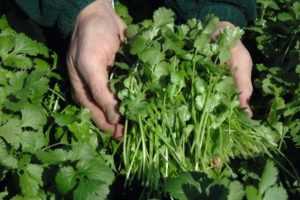
Cilantro, also known as coriander or Chinese parsley, is an herb commonly used in various culinary dishes. Its fresh and citrusy flavor adds a unique touch to many different types of cuisines.
1. Mexican Cuisine
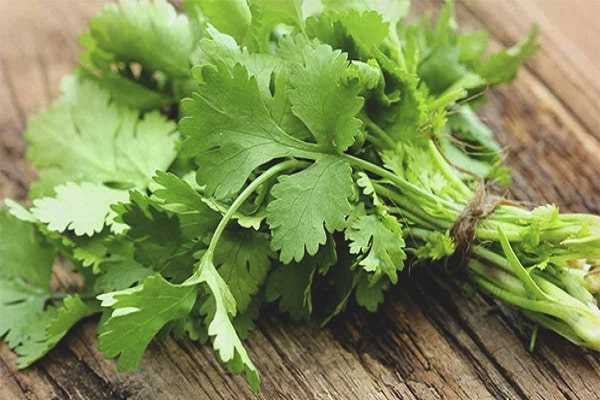
Cilantro is a staple in Mexican cuisine. It is commonly used as an ingredient in salsas, guacamole, and moles. The herb’s bright and refreshing taste pairs well with spicy and savory flavors found in traditional Mexican dishes.
2. Asian Cuisine
In Asian cuisine, cilantro is widely used to add freshness to dishes. It is often added as a garnish to soups, curries, stir-fries, and salads. Cilantro’s distinctive flavor complements the delicate and aromatic spices commonly found in Asian cooking.
3. Mediterranean Cuisine
Cilantro is also a popular herb in Mediterranean cuisine. It is used in dishes such as tabbouleh, hummus, and tzatziki. The herb’s bright flavor adds a refreshing element to these dishes and enhances their overall taste.
4. Caribbean Cuisine
In the Caribbean, cilantro is a key ingredient in many traditional recipes. It is often added to rice and bean dishes, as well as marinades for meats and seafood. The herb’s citrusy flavor helps to balance out the richness and spiciness of Caribbean cuisine.
5. Salad Dressings and Sauces
In addition to being used as a garnish, cilantro can be used to make flavorful salad dressings and sauces. Its bright and tangy taste pairs well with vinegar, lime juice, and other acidic ingredients, making it an excellent choice for creating zesty dressings and sauces.
6. Flavored Oils and Butters
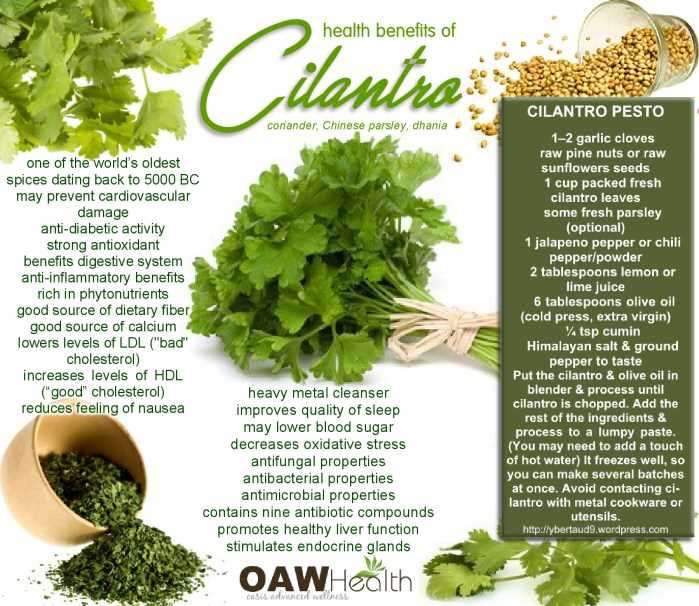
Cilantro can be infused into oils and butters to add a unique flavor to dishes. By combining cilantro with oil or softened butter, you can create a fragrant and flavorful ingredient to enhance the taste of your cooking. It can be used to sauté vegetables, coat grilled meats, or spread on bread.
Overall, cilantro is a versatile herb that can be used in a wide range of culinary applications. Its fresh and citrusy flavor adds vibrancy to dishes from various cuisines around the world.
Growing Cilantro: Tips and Techniques
1. Choosing the Right Location
When growing cilantro, it is important to choose a location that receives full sun or partial shade. Cilantro prefers cooler temperatures, so it is best to avoid planting it in hot, direct sunlight. Additionally, cilantro prefers well-draining soil, so make sure to choose a location with soil that can easily drain excess water.
2. Starting from Seeds
Cilantro is typically grown from seeds rather than transplants. Sow the seeds directly into the soil, about 1/4 inch deep and spaced 6 inches apart. Water the seeds lightly, keeping the soil consistently moist until the seeds germinate.
3. Watering and Fertilizing
Cilantro plants require regular watering, especially during hot and dry periods. It is important to keep the soil evenly moist, but be careful not to overwater as cilantro plants can be prone to rotting. Fertilize the plants every few weeks with a balanced fertilizer to promote healthy growth.
4. Harvesting Cilantro
Cilantro leaves can be harvested once the plant reaches about 6 inches in height. Harvesting should be done in the morning when the leaves are at their peak flavor. Cut the leaves about 1 inch above the ground, and avoid cutting off more than one-third of the plant at a time. Cilantro leaves can be used immediately, or they can be stored in the refrigerator for up to a week.
5. Propagating Cilantro
Cilantro plants can be allowed to flower and produce seeds. The seeds, known as coriander, can be collected and dried for use in cooking. If you want to continue growing cilantro, save some seeds and sow them in the next growing season.
6. Common Pests and Diseases
Cilantro plants are relatively resistant to pests and diseases. However, they can occasionally be attacked by aphids, spider mites, or fungal diseases such as powdery mildew. Regularly inspect the plants for any signs of infestation or disease, and take appropriate measures to control them if necessary.
7. Companion Planting
Cilantro is known to benefit from companion planting with other herbs and vegetables. It can help repel pests such as aphids and spider mites when planted alongside plants like tomatoes or peppers. Additionally, cilantro can provide some shade and protection for smaller plants when planted with taller plants like beans or corn.
8. Continuous Planting
To ensure a continuous supply of cilantro throughout the growing season, consider planting new cilantro seeds every few weeks. This will allow you to have a steady harvest of fresh cilantro leaves throughout the season.
Common Pests and Diseases of Cilantro
Cilantro, like many plants, is susceptible to various pests and diseases that can affect its growth and overall health. Here are some common pests and diseases that cilantro plants may encounter:
Pests:
- Aphids: These small insects can infest cilantro and suck the sap from its leaves, causing them to curl and turn yellow. Regularly inspecting the leaves for these pests and using insecticidal soap can help control their population.
- Whiteflies: These tiny, white insects can cause yellowing and wilting of cilantro leaves. They can be controlled by using yellow sticky traps and applying neem oil.
- Mites: Spider mites can suck the sap from cilantro leaves, causing them to turn yellow and become speckled. Increasing humidity around the plants and applying insecticidal soap can help control these pests.
- Caterpillars: Caterpillars, such as the parsley worm, can feed on cilantro leaves and cause significant damage. Handpicking the caterpillars or using biological controls, such as Bacillus thuringiensis, can help manage their population.
Diseases:
- Leaf spot: This fungal disease causes dark spots to appear on cilantro leaves. To prevent leaf spot, avoid overhead watering and provide adequate spacing between plants for proper air circulation.
- Powdery mildew: Powdery mildew appears as a white or gray powdery coating on the leaves. Good air circulation, proper spacing, and applying fungicides can help prevent powdery mildew.
- Root rot: Overwatering or poorly drained soil can lead to root rot, which causes the roots to become mushy and discolored. To prevent root rot, ensure the soil is well-drained and avoid overwatering.
- Fusarium wilt: This fungal disease causes wilting and yellowing of cilantro plants. Planting disease-resistant varieties and practicing crop rotation can help prevent fusarium wilt.
Regularly inspecting your cilantro plants for pests and diseases is crucial to catch any issues early on and take appropriate measures to control them. Taking proper care of your cilantro plants, such as providing adequate sunlight, water, and nutrition, can also help prevent pest and disease problems.
Precautions and Contraindications When Using Cilantro
While cilantro is generally safe for consumption, there are a few precautions and contraindications to keep in mind:
1. Allergic Reactions:
Cilantro can cause allergic reactions in some individuals. If you experience symptoms such as hives, itching, swelling, or difficulty breathing after consuming cilantro, stop using it immediately and seek medical attention.
2. Interaction with Medications:
Cilantro may interact with certain medications, including blood thinners. If you are taking any medications, consult with your healthcare provider before using cilantro as a herbal remedy or in large quantities.
3. High Oxalate Content:
Cilantro contains a moderate amount of oxalates, which can contribute to the formation of kidney stones in susceptible individuals. If you have a history of kidney stones or are at risk of developing them, it is advisable to limit your intake of cilantro.
4. Pesticide Residues:
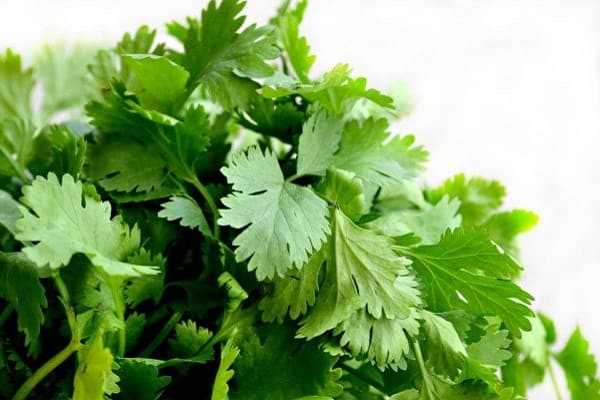
Conventionally grown cilantro can contain pesticide residues. To minimize exposure, choose organic cilantro or thoroughly wash and soak conventionally grown cilantro before using it.
5. Cross-Reactivity:
Individuals with a known allergy or sensitivity to other plants in the Apiaceae family, such as celery, dill, or parsley, may also be sensitive to cilantro. If you have a known allergy or sensitivity, use caution when consuming cilantro and monitor for any adverse reactions.
6. Excessive Consumption:
While cilantro is generally safe in normal culinary amounts, excessive consumption may lead to digestive discomfort, such as stomach pain, diarrhea, or gas. Moderation is key when using cilantro in your diet.
| Category | Safety |
|---|---|
| Pregnancy | Cilantro is generally considered safe during pregnancy when consumed in moderation as a food. However, it is always best to consult with your healthcare provider before making any dietary changes or using cilantro in larger medicinal amounts. |
| Breastfeeding | Cilantro is considered safe for breastfeeding women when used in culinary amounts. As with pregnancy, it is recommended to consult with a healthcare professional before using cilantro for medicinal purposes. |
Fun Facts and Trivia about Cilantro
- Cilantro is also known as coriander or Chinese parsley.
- It is one of the oldest herbs used for culinary and medicinal purposes, with its history dating back over 5,000 years.
- Cilantro is native to the Mediterranean region and parts of Asia.
- The word “cilantro” comes from the Spanish word “cilantro,” which means coriander.
- Both the leaves and the seeds of cilantro are edible and have distinct flavors.
- Cilantro leaves have a fresh, citrus-like taste, while the seeds have a warm, nutty flavor.
- Cilantro is a versatile herb that is commonly used in Mexican, Indian, Thai, and Middle Eastern cuisines.
- It is often used as a garnish for dishes like salsas, curries, and salads.
- Some people may have a genetic predisposition to dislike the taste of cilantro, perceiving it as soapy or metallic.
- Cilantro is rich in vitamins A, C, and K, as well as minerals like potassium and manganese.
- In traditional medicine, cilantro has been used to aid digestion, promote detoxification, and reduce inflammation.
- Cilantro is relatively easy to grow at home and can be grown both indoors and outdoors.
- The plant prefers well-drained soil and requires regular watering.
- Cilantro can be harvested when the leaves are young and tender, usually around 6-8 weeks after planting.
These fun facts and trivia about cilantro help to showcase the rich history and versatility of this popular herb. Whether you love it or dislike it, there’s no denying the impact that cilantro has had on cuisines around the world.
Questions and Answers:
What are the properties of cilantro?
Cilantro is rich in vitamins A, C, and K, as well as minerals such as potassium, calcium, and magnesium. It also contains antioxidants and has anti-inflammatory properties.
Is cilantro easy to cultivate?
Yes, cilantro is relatively easy to cultivate. It can be grown from seeds in both garden beds and containers, and it thrives in full sun or partial shade.
What are the potential health benefits of cilantro?
Cilantro has been associated with various health benefits. It may help lower blood sugar levels, aid digestion, and promote heart health. It may also have antibacterial and antifungal properties.
Can cilantro be harmful to some individuals?
Yes, cilantro may cause allergic reactions in some individuals, especially those who are allergic to birch pollen or have plant-related allergies. It can also interact with certain medications and cause skin irritation.
How can cilantro be used in cooking?
Cilantro is widely used in various cuisines around the world. It can be added to salads, salsas, marinades, soups, and stir-fries to add a fresh and aromatic flavor. It is often used as a garnish as well.
Are there any contraindications for cilantro?
Cilantro should be used with caution by individuals with bleeding disorders, as it may increase the risk of bleeding. It is also not recommended for pregnant women, as it may cause uterine contractions.
Can cilantro be used as a natural remedy?
Yes, cilantro has been used as a natural remedy for various conditions. It has been traditionally used to detoxify the body, relieve anxiety, and promote healthy digestion. However, more research is needed to fully understand its potential benefits.







